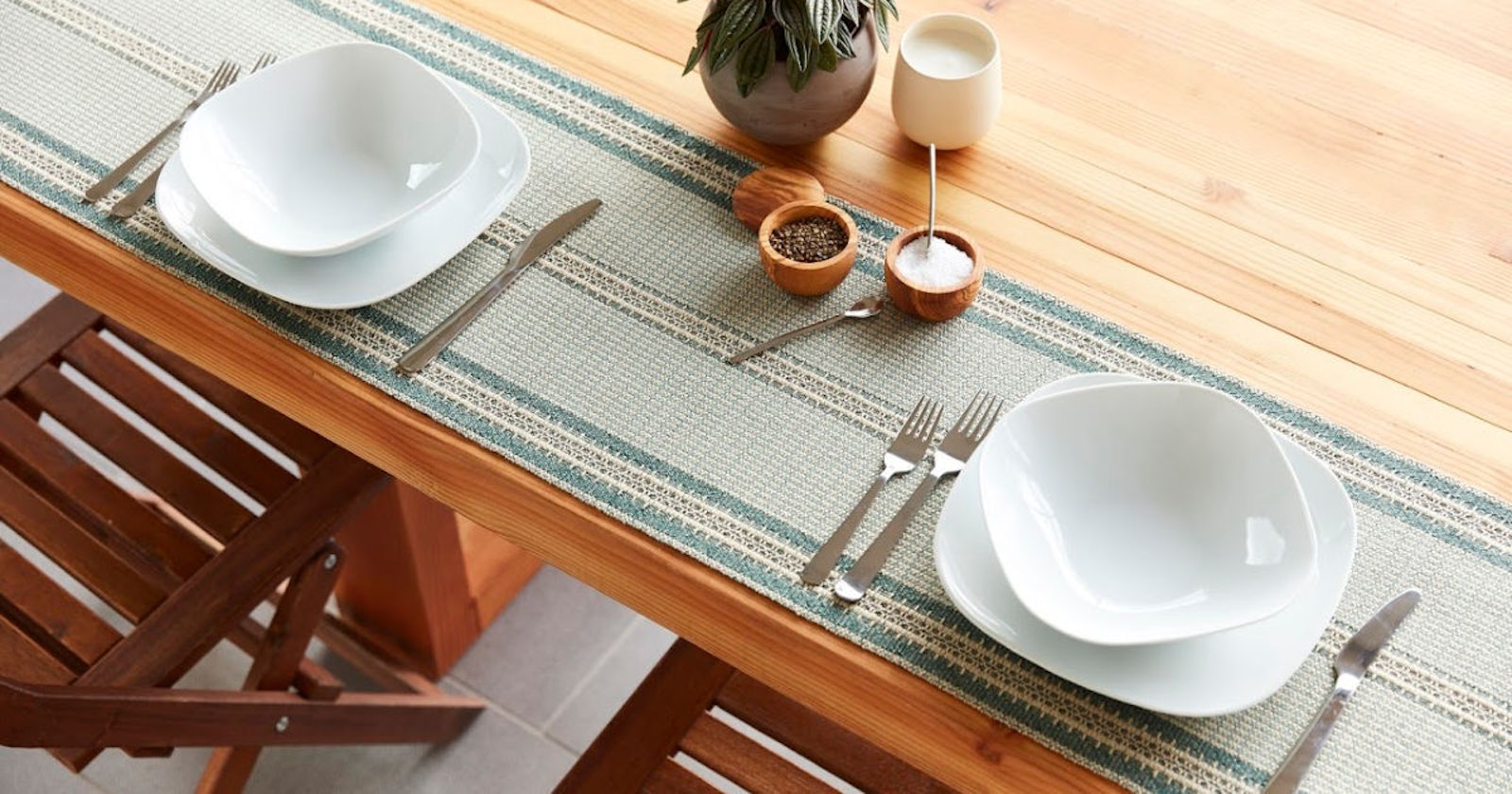When Susan E. Horton and I first decided to give our March/April 2019 issue of Handwoven an Americana theme, we knew there would be one weave structure that would probably reign supreme: overshot. What we weren’t expecting, however, were the ways in which our designers took traditional overshot drafts and patterns—the kinds that would look at home on a 19th-century coverlet—and reinterpreted them in new ways.
Perhaps the most traditional use of overshot in the magazine is in Nancy Dunlap’s A Job Made Easier Runner. Using the draft Kay’s Design from Marguerite Porter Davison’s A Handweaver’s Pattern Book, Nancy designed a set of runners with beautiful borders and an overshot “star” in each corner. She wove the runners in a very classic color palette, the kind that would look equally at home in a living history museum or on a modern dining-room table.
Christina’s Ancient Rose Scarf straddles traditional and modern uses of overshot.
Just slightly less traditional is my own project, the Ancient Rose Scarf. I also looked to Davison for my draft, although, in this case, I took the Ancient Rose draft. While the patterning on the scarf is staunchly traditional, the yarns used take this scarf into the 21st century. First, I chose lyocell yarns (also known as Tencel), which wasn’t invented until 1972. Second, for my warp and tabby yarns I used black, a color that was difficult to produce in the time before synthetic dyes. The pattern weft, however, is an unintentional nod to tradition. The hand-dyed Tencel has a slight variegation similar to the naturally hand-dyed yarns used by early American weavers.
When designing her Rose Circles Bed Runner, Rosalie Neilson purposely chose motifs commonly found in traditional overshot pieces.
In her Rose Circles Bed Runner, Rosalie Neilson completely turns overshot on its head. For her design, Rosalie took motifs commonly found in overshot designs and then translated them into warp-faced rep weave. Although she wove them using modern machine-spun cotton yarns colored with synthetic dyes, she chose multiple slightly different shades of yellow, blue, and red to highlight the unevenly dyed yarns of the past. She also chose not to weave her design to square so that it would better mimic patterns woven with uneven handspun yarns. Her bed runner might not be overshot, but for weavers who are familiar with 19th-century weaving, it is a clear homage to the structure and coverlets of old.
Tied overshot, the structure used by Ann Weymouth is a modern structure that shares some visual similarities with traditional overshot.
For her table runner, Ann Weymouth chose to use tied overshot, a weave structure born in 1970s, making it a baby compared with most other structures. It’s similar to true overshot, although it’s more closely related to summer and winter (another popular structure during the 19th century). In her Tied Overshot Journey Runner, woven to honor Madelyn van der Hoogt, Ann wove her project using a modern structure done in the style of a modern weaver. It really is the perfect project to take this issue—devoted to the history of North American handweaving—full circle.
Happy Weaving!
Christina




